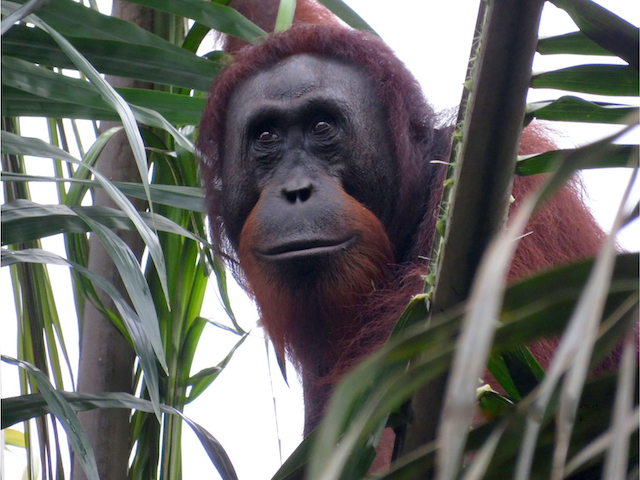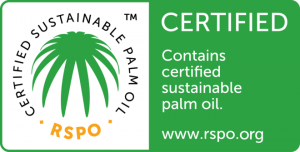Since 1996, Marc Ancrenaz, through his NGO HUTAN, has been identifying ways for people to co-exist and share habitats peacefully with orangutans in the Sabah rainforest, Malaysian Borneo.
Marc Ancrenaz DVM, PhD is at the top of his field, well versed in many related areas – primatology, sustainable development, conservation biology, wildlife conservation and climate change, to name a few, and is a useful source for many professionals seeking his expertise.
He spoke to animal advocate and Monaco Life contributor Kat Pirelli-Zucchetta.
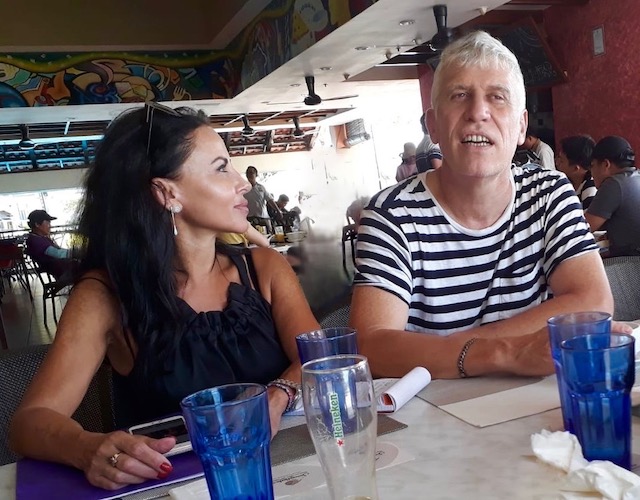
Kat Pirelli-Zucchetta: Where in Borneo is your research centre located and why did you choose this location for your research?
Marc Ancrenaz: Our centre is located in the lower Kinabatangan floodplain in Sabah, Malaysian Borneo, in the village of Sukau. During our first visit to the area in 1994, both directors (Isabelle Lackman and myself) were impressed to see animals and people living together. I remember, for example, seeing an orangutan nest in a durian tree that was in the middle of the village. It was a unique opportunity to try to understand how wildlife and people could coexist. And this is something we have always been interested in – identifying ways for people and wildlife to live together.
Where did orangutan get their name and what does it mean?
In Malay language, orang-utan literally means “People (or person) of the forest”. I think this is self-explanatory of orangutans, for example they are one of our closest living relatives.
What is your objective and primary focus for 2020?
To identify ways for people and animals to live peacefully inside and outside of protected areas. This also means making deeply transformed landscapes more resilient for wildlife and people too.
Orangutans are only found in the rainforest areas of Borneo and Sumatra. Do you conduct work in Sumatra as well as Borneo?
No, mostly in Borneo, however the conclusions and findings of our research can expand much wider than Borneo. Indeed, we look at ways to reconcile agricultural development and wildlife survival. This is a common and global theme. I also work with several international organisations that try to promote sustainable agriculture with different types of commodities.
How do the characteristics differ from Indonesia, Malaysia or Sumatra orangutans?
Although there are three different ‘OU’ species, two in Sumatra and one in Borneo, in terms of behaviour and ecology, they are quite similar. All orangutan species live in a diffuse social system: they don’t live in family groups and spend most of their time alone. However, in an established population, they know their neighbours and interact together once in a while. Sumatran orangutans appear to be more social than in Borneo. OU is a very resilient species, able to adjust and adapt to deep transformation of its environment. For example, they can walk on the ground over large distances, they can shift their diet to what is available in new man-made landscapes, they can use palms and other exotic tree species to build a nest, etc. As long as we don’t remove, either by translocating or shooting, the OU from where they are found, they show an amazing ability to survive in non-forest habitat.
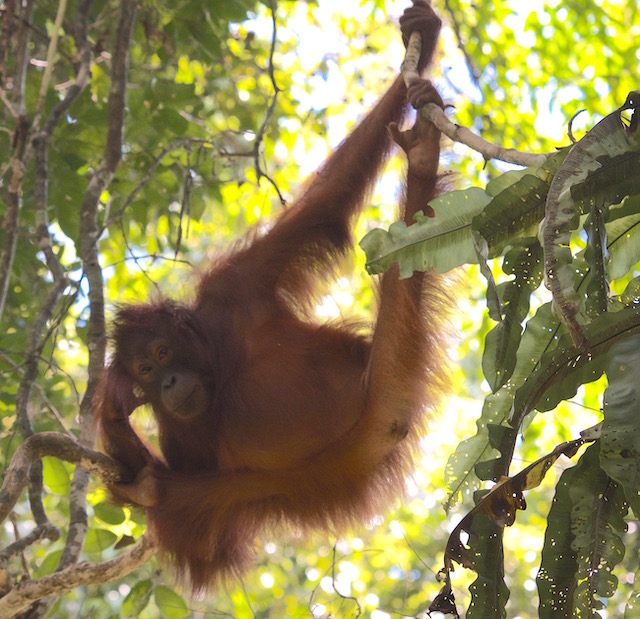
With that in mind do you believe it’s possible for humans in Sabah to eventually coexist with orangoutangs?
Yes. I’m also convinced that this is the only way for orangutans to survive in the long-term. Indeed, conserving large-ranging species like the orangutan must be envisioned at the scale of a whole landscape. Conservation strategies must incorporate protected and unprotected forest as well as agricultural and private lands. Hence the need to identify and implement ways for people and wildlife to live together in these non-protected areas. Orangutans are smart, peaceful and are not responsible for many conflicts: there is no reason why people could not accept a peaceful co-existence with this species.
Can you describe your current projects with orangutans?
We try to better understand OU ecology and adaptation to forest degradation by following wild habituated individuals in the forests of Kinabatangan. We also look at how OU can adapt and survive to agriculture landscapes: is it possible, how? So, we also follow OU in palm oil dominated landscapes where animals survive and breed in a mosaic landscape.
How many wild orangutans are left on the planet?
OU is a critically endangered species, meaning that their numbers are declining fast, however this doesn’t mean that they are going to be extinct any time soon. Indeed, this species is resilient and if animals are not killed they can adjust and survive in man-made landscapes, as long as some forest patches and corridors are retained within these landscapes.
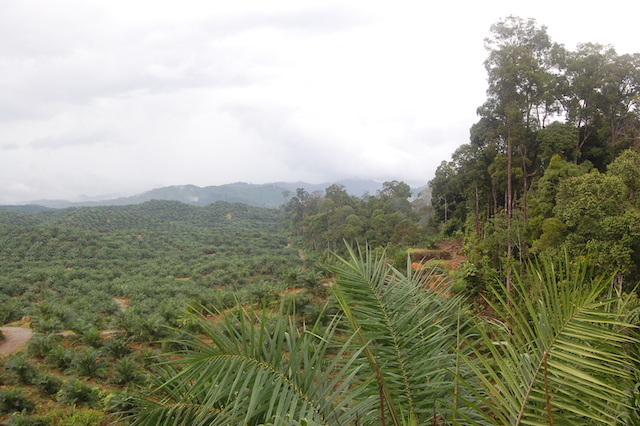
Today we estimate that not more than 80,000 individuals are still found in Borneo (one species, three sub-species); 15,000 individuals of the Sumatran species and less than 1,000 individuals of the newly described Tapanuliensis species also found in Sumatra. How are rescue and protection of these animals fairing right now?
Rescue and translocation are commonly seen as a major OU conservation strategy. These tools mostly address a welfare component. However, recent analysis shows that only a portion of the animals can be successfully rehabilitated despite all efforts and care allocated by orphanages.
As a conservation biologist, I consider that conservation efforts should primarily target wild OU populations and their habitat in Borneo and Sumatra. Indeed, there are still large enough numbers out there to ensure that the species can survive in the wild in perpetuity, but the time to act is now, since their numbers keep on declining.
An issue that starts to be better understood is what we call wild-to-wild translocation: several hundred OU have been translocated over the past 10 years in Borneo (and to a lesser extent in Sumatra) from situations that were deemed not viable for them by the people in charge of their management. These animals, following capture, were subsequently released in nearby forests. Recent information indicates that this approach creates more problems than it solves. First, this is a costly and risky endeavour. Second, there is no post release monitoring and we don’t know if the animals can survive the stress of a translocation and how they survive in a forest where they don’t know where food is and they don’t know the resident orangoutangs. Last, often, after the orangoutangs are removed from a forest patch, these patches are clear cut and replaced by other types of land-uses. We lose all the biodiversity that was surviving in these fragments. Translocation should only be undertaken when there is no other option and very often, there are.
What would you say are the biggest threats to their survival?
1) Hunting and killing – for bushmeat, in conflict situations and for the pet trade
2) Habitat loss – forest conversion and fires
3) Risk of disease transmission
Today we estimate that not more than 80,000 individuals are still found in Borneo (one species, three sub-species); 15,000 individuals of the Sumatran species and less than 1,000 individuals of the newly described Tapanuliensis species also found in Sumatra. How are rescue and protection of these animals fairing right now?
Rescue and translocation are commonly seen as a major OU conservation strategy. These tools mostly address a welfare component. However, recent analysis shows that only a portion of the animals can be successfully rehabilitated despite all efforts and care allocated by orphanages.
As a conservation biologist, I consider that conservation efforts should primarily target wild OU populations and their habitat in Borneo and Sumatra. Indeed, there are still large enough numbers out there to ensure that the species can survive in the wild in perpetuity, but the time to act is now, since their numbers keep on declining.
An issue that starts to be better understood is what we call wild-to-wild translocation: several hundred OU have been translocated over the past 10 years in Borneo (and to a lesser extent in Sumatra) from situations that were deemed not viable for them by the people in charge of their management. These animals, following capture, were subsequently released in nearby forests. Recent information indicates that this approach creates more problems than it solves. First, this is a costly and risky endeavour. Second, there is no post release monitoring and we don’t know if the animals can survive the stress of a translocation and how they survive in a forest where they don’t know where food is and they don’t know the resident orangoutangs. Last, often, after the orangoutangs are removed from a forest patch, these patches are clear cut and replaced by other types of land-uses. We lose all the biodiversity that was surviving in these fragments. Translocation should only be undertaken when there is no other option and very often, there are.
Because the majority of orangutans are found in degraded forests, does this contribute to the decline by opportunistic hunters due to their vulnerability?
The fact that most forests inhabited by OU are more easily accessible to hunters make OU more susceptible to hunting. There is no specific poaching for OU, it is rather an opportunistic by-product. OU are killed by hunters when hunters come back from a hunting expedition empty handed.
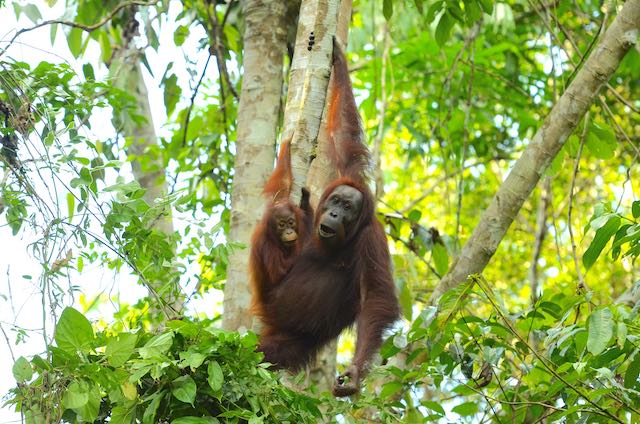
As in Indonesia, is wildlife crime – the killing of adult orangutans and live capture of babies for sale – an issue on the Malaysian side of Borneo?
The orangutan trade is not a real issue in Sabah and Sarawak, the two Malaysian states of Borneo. Possessing a baby orangutan is definitely not part of the Malaysian way of life, and in several places in Sabah, orangutan is not killed for its meat either. This creates the ideal conditions to secure a future for the orangutans.
Are palm oil plantations in these areas moving to sustainable palm oil?
Sustainable palm oil is a solution. Unfortunately, today only 20% of the market is RSPO certified. Some companies that are RSPO certified are actually home to OU. In many areas, most forests outside of these estates have been clear cut by local communities and other stakeholders and the last OU of the landscape have taken refuge in the High Conservation value forests left in these estates.
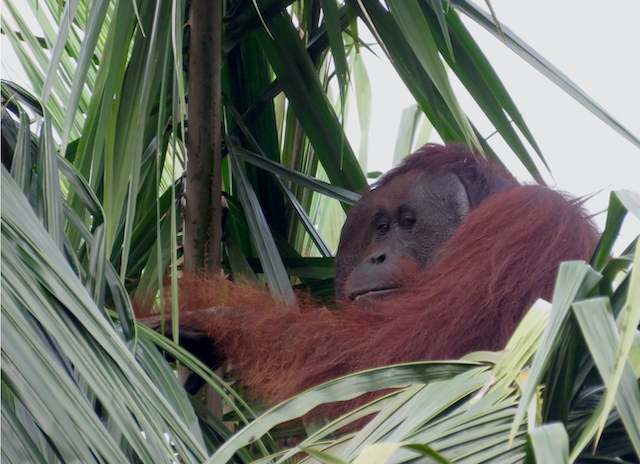
Do you have any idea how many orangutans were killed in 2019?
Researchers from Borneo Futures estimate that between 1,500 and 2,000 OU are killed every year.
Because orangutans are loved by so many people and have been used in the film industry do you have many celebrities involved in your conservation efforts?
OU is attracting a lot of attention worldwide. However, at HUTAN, we believe that local communities are the key guardians of their natural resources (including OU). Our priority is to involve local people on the conservation of OU and their forest. A lot of people, including celebrities, want to have a close encounter with orangutans and they post pictures and “selfies” holding a bay in their arms. Here I would like to ask everyone to stop this kind of behaviour. First, being in a close proximity with wild animals creates a risk of disease transmission. Second, this really gives a bad example of how people think about wild animals and is an incentive for the pet trade, which is one of the worst threats faced by wildlife today. Please, do not post these kind of pictures.
Celebrities visit the wild orangutans that we are studying once in a while: last year for example we had the pleasure to welcome Dame Judy Dench at our study site.
What can people do in Monaco and France to help save this species from extinction in the wild?
Boycott of palm oil is not a solution. Indeed, there is not an easy solution to a complicated issue, and palm oil is a complicated issue. Support RSPO certified palm oil. Support projects that try to design solutions to sustain wild OU populations. Get informed and we advise people to please STOP posting selfies with baby orangutans.
Is there anything you would like to add?
50 years of OU conservation has failed to save the OU from a rapid decline. We need to come up with new thinking, new approaches to save the OU. Engaging with palm oil plantations to make agricultural landscapes able to sustain OU in the long term is a very thought-provoking and new approach. Indeed, I do believe that engaging with all stakeholders is part of the solution. Engaging with the palm oil industry, engaging with local communities and local politicians. We need to build new models of conservation that are mostly led and implemented by local community members, not by foreigners.
Note: The European Palm Oil Industry has announced a plan to provide 100% certified sustainable palm oil by the end of 2020, which is sourced 50% Indonesia and Malaysia, 30% from India and 10% China.
You can also look for this logo…
To learn more about sustainable palm oil: https://www.rspo.org/
Top photo: Pood, unflanged male followed by HUTAN team into an palm oil plantation, courtesy HUTAN
